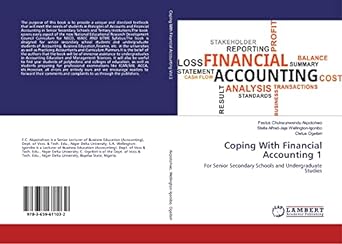Q33
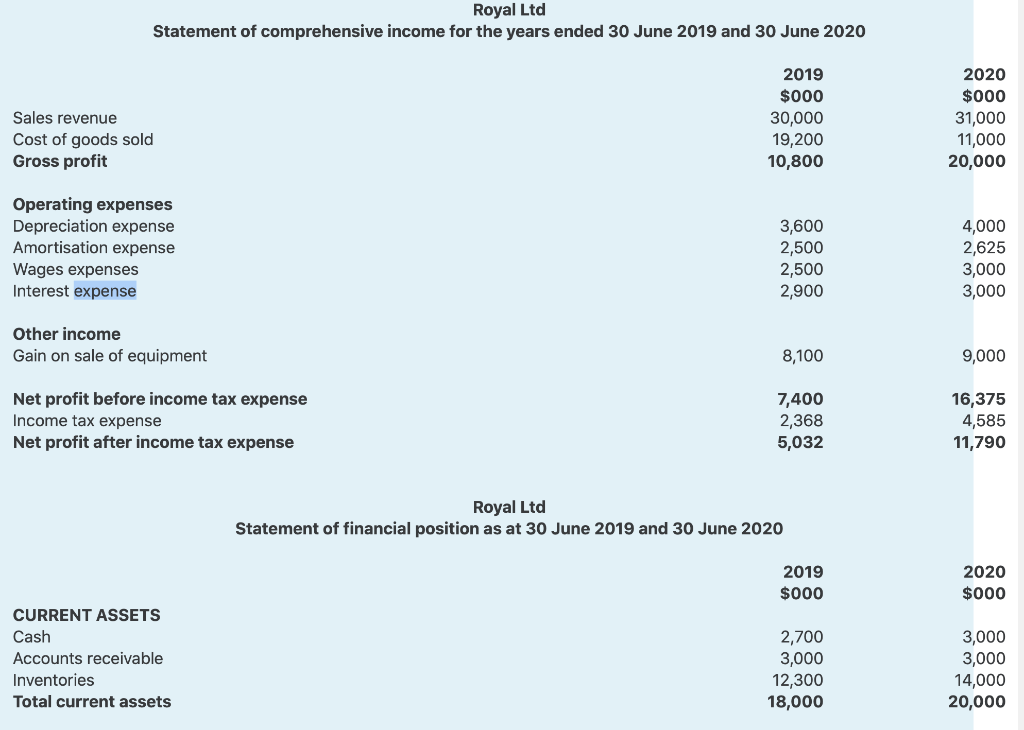
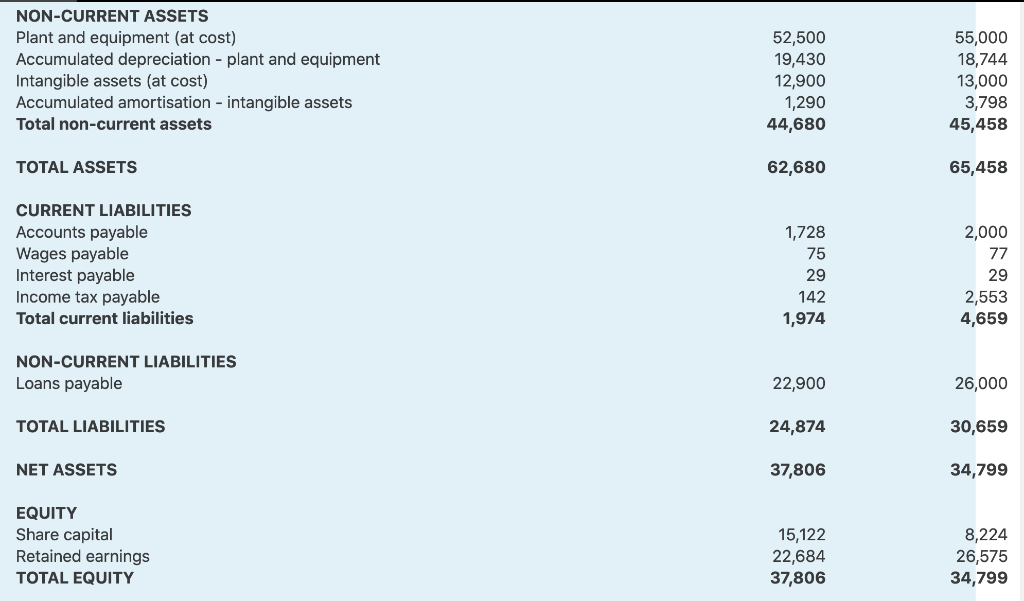
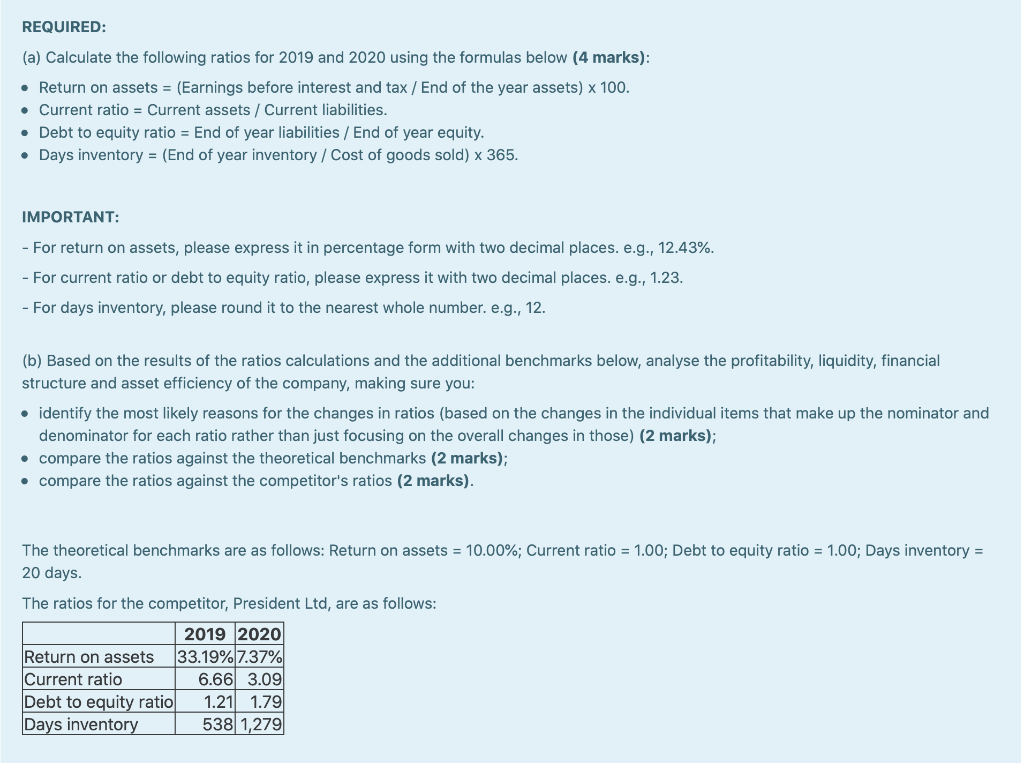
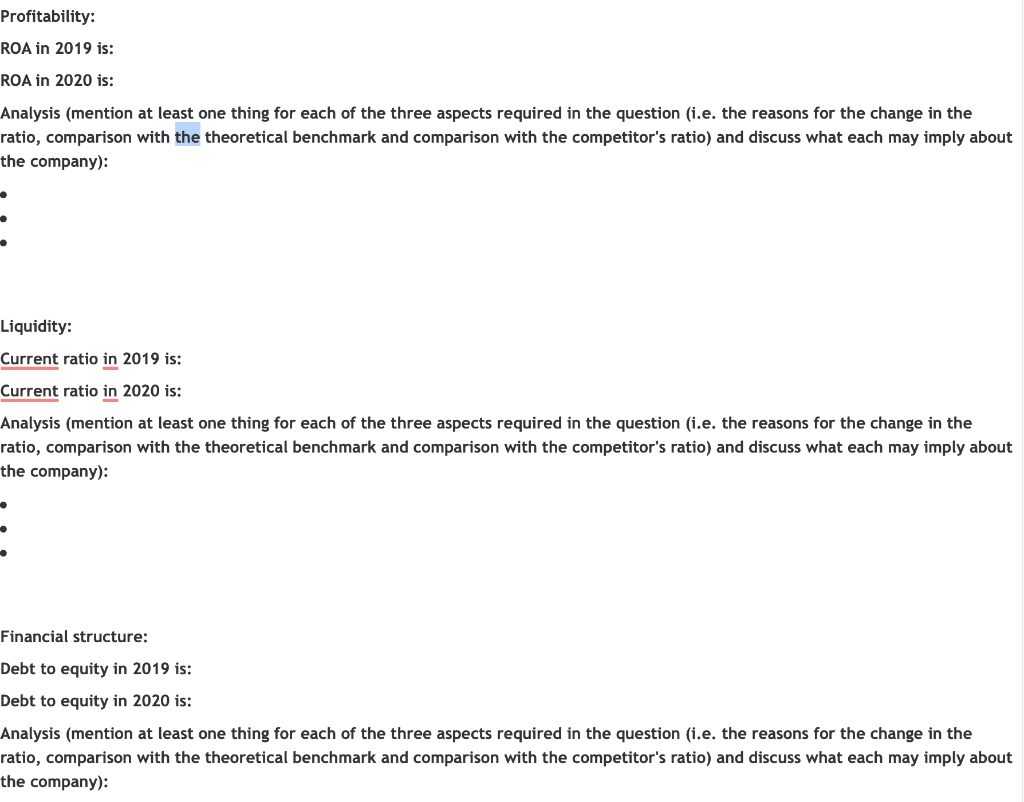
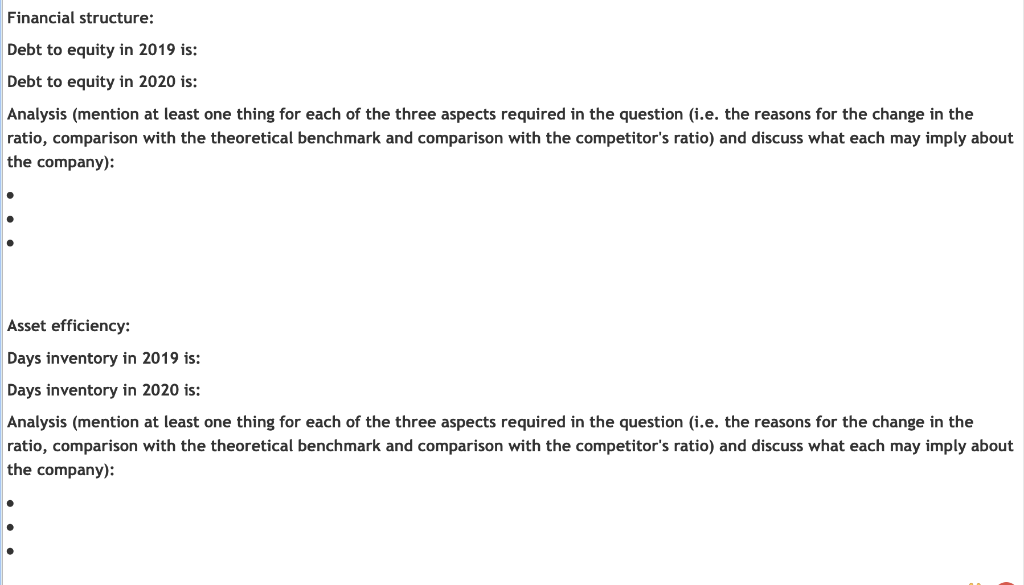
Royal Ltd Statement of comprehensive income for the years ended 30 June 2019 and 30 June 2020 Sales revenue Cost of goods sold Gross profit 2019 $000 30,000 19,200 10,800 2020 $000 31,000 11,000 20,000 Operating expenses Depreciation expense Amortisation expense Wages expenses Interest expense 3,600 2,500 2,500 2,900 4,000 2,625 3,000 3,000 Other income Gain on sale of equipment 8,100 9,000 7,400 Net profit before income tax expense Income tax expense Net profit after income tax expense 2,368 5,032 16,375 4,585 11,790 Royal Ltd Statement of financial position as at 30 June 2019 and 30 June 2020 2019 $000 2020 $000 3,000 CURRENT ASSETS Cash Accounts receivable Inventories Total current assets 2,700 3,000 12,300 18,000 3,000 14,000 20,000 NON-CURRENT ASSETS Plant and equipment (at cost) Accumulated depreciation - plant and equipment Intangible assets (at cost) Accumulated amortisation - intangible assets Total non-current assets 52,500 19,430 12,900 1,290 44,680 55,000 18,744 13,000 3,798 45,458 TOTAL ASSETS 62,680 65,458 CURRENT LIABILITIES Accounts payable Wages payable Interest payable Income tax payable Total current liabilities 1,728 75 29 142 1,974 2,000 77 29 2,553 4,659 NON-CURRENT LIABILITIES Loans payable 22,900 26,000 TOTAL LIABILITIES 24,874 30,659 NET ASSETS 37,806 34,799 EQUITY Share capital Retained earnings TOTAL EQUITY 15,122 22,684 37,806 8,224 26,575 34,799 REQUIRED: (a) Calculate the following ratios for 2019 and 2020 using the formulas below (4 marks): Return on assets = (Earnings before interest and tax / End of the year assets) x 100. . Current ratio = Current assets / Current liabilities. Debt to equity ratio = End of year liabilities / End of year equity. Days inventory = (End of year inventory / Cost of goods sold) x 365. IMPORTANT: - For return on assets, please express it in percentage form with two decimal places. e.g., 12.43%. - For current ratio or debt to equity ratio, please express it with two decimal places. e.g., 1.23. - For days inventory, please round it to the nearest whole number. e.g., 12. (b) Based on the results of the ratios calculations and the additional benchmarks below, analyse the profitability, liquidity, financial structure and asset efficiency of the company, making sure you: identify the most likely reasons for the changes in ratios (based on the changes in the individual items that make up the nominator and denominator for each ratio rather than just focusing on the overall changes in those) (2 marks); compare the ratios against the theoretical benchmarks (2 marks); compare the ratios against the competitor's ratios (2 marks). The theoretical benchmarks are as follows: Return on assets = 10.00%; Current ratio = 1.00; Debt to equity ratio = 1.00; Days inventory = 20 days. The ratios for the competitor, President Ltd, are as follows: 2019 2020 Return on assets 33.19% 7.37% Current ratio 6.66 3.09 Debt to equity ratio 1.21 1.79 Days inventory 538 1,279 Profitability: ROA in 2019 is: ROA in 2020 is: Analysis (mention at least one thing for each of the three aspects required in the question (i.e. the reasons for the change in the ratio, comparison with the theoretical benchmark and comparison with the competitor's ratio) and discuss what each may imply about the company): Liquidity: Current ratio in 2019 is: Current ratio in 2020 is: Analysis (mention at least one thing for each of the three aspects required in the question (i.e. the reasons for the change in the ratio, comparison with the theoretical benchmark and comparison with the competitor's ratio) and discuss what each may imply about the company): Financial structure: Debt to equity in 2019 is: Debt to equity in 2020 is: Analysis (mention at least one thing for each of the three aspects required in the question (i.e. the reasons for the change in the ratio, comparison with the theoretical benchmark and comparison with the competitor's ratio) and discuss what each may imply about the company): Financial structure: Debt to equity in 2019 is: Debt to equity in 2020 is: Analysis (mention at least one thing for each of the three aspects required in the question (i.e. the reasons for the change in the ratio, comparison with the theoretical benchmark and comparison with the competitor's ratio) and discuss what each may imply about the company): Asset efficiency: Days inventory in 2019 is: Days inventory in 2020 is: Analysis (mention at least one thing for each of the three aspects required in the question (i.e. the reasons for the change in the ratio, comparison with the theoretical benchmark and comparison with the competitor's ratio) and discuss what each may imply about the company)











